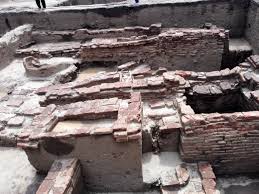Keezhadi Excavations:

The Archaeological Survey of India (ASI) has asked Amarnath Ramakrishna, the archaeologist who led the Keezhadi excavations, to resubmit his excavation report after revisions.
- The Keezhadi excavation site is located near Madurai in Tamil Nadu, along the Vaigai River.
- It is a major urban Sangam-era settlement, estimated to date between the 5th century BCE and the 3rd century CE.
- It represents one of the most significant archaeological findings in Tamil Nadu since the Adichanallur site.
- Excavations reveal an urban, literate, and craft-oriented society, suggesting early urbanisation in South India independent of North Indian influences.
- The term ‘Sangam’ is derived from the Sanskrit word ‘Sangha’, meaning an assembly or association, and refers to Tamil literary academies under the Pandya kings.
- Sangam literature provides vital insights into ancient Tamil society, covering aspects like governance, economy, trade, war, social life, and agriculture.
- Key texts include:
- Tolkappiyam (oldest Tamil grammar),
- Pattupattu (Ten Idylls),
- Ettutogai (Eight Anthologies),
- Padinenkilkanakku (Eighteen Minor Works),
- The three great epics (Silappadikaram, Manimekalai, and Civaka Cintamani).




